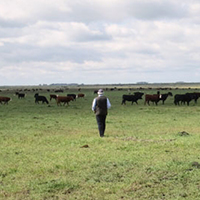The World Bank Group has worked with various Uruguayan governments in areas such as infrastructure, transport, agriculture, natural resources, education, sanitation, and health.
Since 2010, more than $2 billion in IBRD loans have been approved to finance investments in infrastructure, agriculture, human capital, climate change adaptation, social protection, support for small and medium enterprises, and institutional strengthening, as well as to build the government’s capacity to protect the most vulnerable populations from external shocks through contingent financing. Moreover, the World Bank has channeled multiple grants, and provided analytical and technical support in areas relevant to the country’s development.
Some of the results of the work of the World Bank and Uruguay are as follows:
South-South Exchanges: In keeping with the development of innovative financial and knowledge services that provide solutions across countries, the World Bank Group has facilitated Uruguay’s participation in more than 30 South-South knowledge exchanges over the past 12 years. The geographical scope of these initiatives has been very broad, covering five of the six regions in which the World Bank Group operates.
The wide variety of topics covered include livestock traceability (Botswana, Namibia, Kazakhstan, the Kyrgyz Republic, Nicaragua, and Paraguay), prevention of non-communicable diseases (Chile, Argentina, Türkiye), digitalization of public services (Chile, El Salvador), road maintenance and performance-based contracts (Morocco), the use of information and communication technologies (ICTs) in education (Armenia and the Kyrgyz Republic), and information systems in agriculture (Mexico). Uruguay has also received delegations from the Kyrgyz Republic and Papua New Guinea (seeking assistance to incorporate good practices into their national electricity companies); from Zimbabwe and Botswana ( budget issues); from Nicaragua (to improve the country’s statistical capacity); and from Costa Rica (to share the country’s experience in water management). Representatives from Uganda’s private sector, sponsored by IFC, have also visited Uruguay.
E-government: The Improving Service Delivery to Citizens and Businesses through E-Government Project (PROMESEG) has had a significant impact on efforts to improve connectivity and quality of access to distance education in Uruguay’s rural areas. In more than 1,200 rural schools, the project facilitated access to virtual classes, allowing teachers of various subjects, such as English, to provide distance learning. This has helped close the education gap and provide learning opportunities to communities that previously had limited access to digital education. In addition, the project has promoted greater accessibility to online procedures for citizens. Between 2018 and 2023, more than 175,000 persons were served through a multichannel customer service system implemented in 2018 (telephone, face-to-face, chat, social media, email), facilitating access to government services from anywhere and at any time. This has enhanced efficiency and made it easier for citizens to carry out essential business.
Thanks to the outcomes of that project, in 2023, the World Bank approved a new loan to Uruguay for US$16 million to continue supporting the transformation of the State. The new project will focus on strengthening the public financial management ecosystem in the Ministry of Economy and Finance, implementing data analytics tools, and incorporating climate aspects into financial, budgetary, and fiscal management. The project will also focus on strengthening competition and consumer protection to improve market institutions and competitiveness.
Climate Insurance: Many countries have approached the World Bank in search of a solution similar to the one implemented with the Uruguayan government. In December 2013, the World Bank signed an agreement with the State-run electricity company (UTE) to insure UTE for 18 months against the combined risks of drought and high oil prices. The transaction was designed to help the company offset financial losses that can occur when lack of rainfall reduces the volume of water in reservoirs that feed power plants, forcing the company to turn to thermal generation, which has a higher cost and requires the importation of alternative fuels. This was the largest transaction of its kind in the market ($450 million) and the first commodity hedge transaction between an emerging economy and the World Bank.
Climate Change and Responsible Production: The “Sustainable Management of Natural Resources and Climate Change Project” (DACC) has helped more than 5,000 rural farmers, 22 percent of whom were women, adopt climate-smart agricultural and livestock practices to enhance climate change resilience in the agricultural sector. The project created the National System for Agriculture Information (SNIA), a digital agriculture system consisting of 34 separate and interoperable products (such as a novel traceability system for the application of pesticides and a meteorological early warning system for farmers).
In 2021, the World Bank approved a loan to Uruguay for US$35.5 million to continue developing information systems that help farmers and public policy makers prepare climate change resilience measures in advance and support the development of agroecology. The objective of the program is to ensure that food in Uruguay is produced in an environmentally sustainable manner and meets the standards of the most demanding international markets.
Knowledge Agenda
The World Bank also produces a series of strategic analytical studies. Recent reports include:
Jugar un Partido Desigual (An Unfair Fight) on how gender gaps affect the Uruguayan economy.
Social Inclusion in Uruguay, which analyzes the successes of the country’s robust social inclusion agenda, but also reveals stubborn pockets of exclusion.
Justo a Tiempo (Just in Time) on aging, technological change, skills and labor regulations in Uruguay in the future.
Last Updated: Apr 03, 2024

